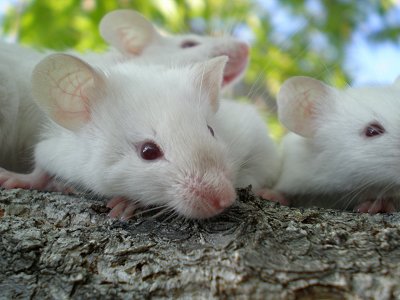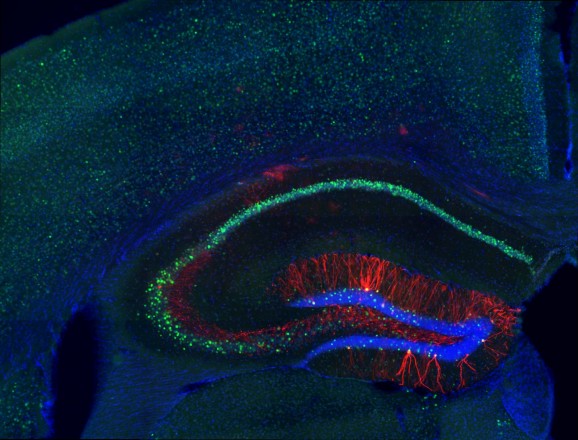Scientists Swap Out Bad Memories For Good Ones In Mice
This article is more than 2 years old
 Both science fiction and actual science have demonstrated the malleability of memory, from implanting artificial memories to suppressing bad ones. MIT researchers recently added to the body of memory work with their recent publication in Nature about swapping positive and negative memories in lab mice.
Both science fiction and actual science have demonstrated the malleability of memory, from implanting artificial memories to suppressing bad ones. MIT researchers recently added to the body of memory work with their recent publication in Nature about swapping positive and negative memories in lab mice.
Memories are complicated. For one thing, as soon as we experience something, our brains go to work, associating the memory with context, whether it’s emotional or geographical or involving the people surrounding the event. Because memories aren’t exact recordings of what has actually happened (which is what makes eyewitnesses notoriously unreliable), psychologists and scientists have long been toying with it, seeing how they can manipulate people to either create new associations surrounding an event, remember things that had been long buried, or even implant new memories. MIT’s recent study sought to identify the neurological basis for such ideas.

The mice were then put in a box with two connected compartments. On one side of the box, light would activate the same neurons that were active when the memories were formed, thus inducing either the positive or negative memory in the mice. Mice who had previously interacted with the female sought out this side of the box, while mice who were shocked stayed away from it. This part isn’t all that surprising, but it was necessary to confirm that the researchers were indeed activating the memories of the mice that corresponded with their previous positive or negative experience.
 The next part is the most interesting—they swapped the memories. The mice that had previously been shocked now interacted with a female mouse (and vice versa) while the scientists activated the same memory-related neurons. When the scientists put them back in the box, the mice that had recently been subject to the shock stayed away from the light, even though previously they had sought it out. Similarly, the mice that had recently hung out with a female sought out the light, even though it previously reminded them of their shocks. Essentially, the neurons that were once associated with a negative memory now were associated with a positive one, and vice versa.
The next part is the most interesting—they swapped the memories. The mice that had previously been shocked now interacted with a female mouse (and vice versa) while the scientists activated the same memory-related neurons. When the scientists put them back in the box, the mice that had recently been subject to the shock stayed away from the light, even though previously they had sought it out. Similarly, the mice that had recently hung out with a female sought out the light, even though it previously reminded them of their shocks. Essentially, the neurons that were once associated with a negative memory now were associated with a positive one, and vice versa.
“There may be a lengthy process before this tech can be translated into human application,” study co-author Roger Redondo said, “but the circuits seem to be very similar between humans and mice when it comes to these memory associations and emotional memories.” In the long run, the study could help generate ideas for treating PTSD and depression.












